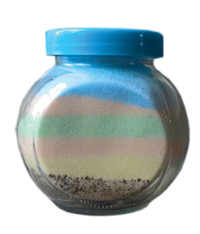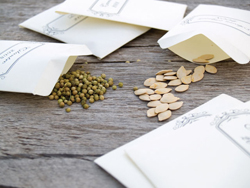Creative ideas on how to help children and young people engage with loss and respond to the death of a family member or friend
Much has been written about children and grief, coping with the deaths of parents and siblings and their participation, or not, in funerals and memorial events. The short version is that children experience grief with a range of emotions and responses, just as adults do. But their experience and expectations of life are different and they are less constrained by adult society’s expectations so, although their emotions and responses are similar to those of adults, they will not necessarily match.
However, we should not make assumptions. Children and young people can feel very alone in bereavement and may have different concerns to adults. They are individuals and their grief will have a unique pattern, just as adults. They need to be given the space and support to find their own way through it. Providing a listening ear and silent companionship may be enough for some children; others may need a place where they can simply go and be happy. A nurturing environment where children can express their thoughts and emotions through wondering questions, play and creativity can be healing. Teenagers may find social media a valuable way of expressing feelings and finding support.
Importance of play
Younger children may find it helpful to do their remembering through play. Use whatever toys and equipment are available, and provide as many options for play as possible. It is important that it is child-led and there is no direction, input or expectations from adults; just the reassurance, if needed, that whatever they do is okay. For example, provide coloured cloths, play people, building blocks, glass nuggets, battery candles, e.g. a child was observed using a block to represent a coffin and re-enacting a funeral service. Or provide a sand tray, some blue cloth, a few toy figures or dolls, and some toy cars/boats to help children to process a car accident or tragedy.
Ideas for younger children
- Decorate butterfly shapes with gel pens and jewel stickers. In a group, children may be encouraged to give their butterfly to whoever they think needs it.
- Decorate paper chain people, then invite the children to join their chains together to form a large ‘circle of love’ around them.
- Make hearts with air-drying clay. Paint and varnish with PVA glue when dried.
- Make bead bracelets using a person’s favourite colours.
- Display emoticons with the different emotions that children who are grieving might feel, e.g. painted pebbles. Ask if they can identify them and suggest times when people (including themselves) might feel that way.
- Decorate glass tealight holders using glass pens and jewel stickers. Provide (battery) tealights and invite children to take them home to light whenever they wish, and pray, as appropriate.
- Give children a battery tealight, and invite them to switch it on and place it in a dark place somewhere in the room. If appropriate, they could say ‘The light of Christ’ as they place the tealight.
Ideas for all ages
Here are some suggestions to help children and young people explore and respond to loss. They can be used at home, in a service, act of remembrance, or memorial event.
Memory box
A memory box holds special things that belonged to a loved one who has died. It can simply be a decorated shoe box or a special box can be bought. It could include photos, favourite music, e.g. a CD, letters, small objects – anything that is treasured as a memory of a loved one. The items will be a reminder of happy times together and offer some comfort. The box can also be a useful way to pass on memories, e.g. of a parent who dies when a child is very young. They are something that even young children can do for themselves. Creating a memory box can be an emotional, even overwhelming, experience. It can be helpful to have the support of a close relative or friend while doing this.
Salt jar

Give each person a small jar full of salt and a large sheet of paper. Ask them to empty their salt onto the paper, creating four or five well spread out piles. Invite them to rub a different stick of coloured chalk onto the paper next to each pile of salt. As the chalk powder blends with the salt, it colours it. The colour can be associated with a specific or special memory of the person who has died. With children, this is best done with one-to-one support; many will enjoy talking about their memories as they colour the chalk. Do not rush the activity. Carefully return the piles of chalk to the jar, to create four/five different coloured layers. Secure the lid firmly. The layered jar can be given pride of place at home as a reminder of their special person.
Graffiti wall
Stick a large sheet of paper on a wall and invite people to write or draw their memories of the person who has died.
Letting go
Prepare a deep container of water. Give everyone a small pebble or stone. At a suitable point, invite people to place their stone in the water, as a symbol of letting go. Don’t be too specific about what is being letting go – let each person choose whatever they wish to let go of.
Build a cairn
Give everyone a pebble or stone. Invite the children and young people to come and add their stone to the pile as a symbol of togetherness in grief, and of being together in a special place. As they place their stone on the pile, older children could be invited to say, silently or aloud, as they wish: ‘I add my stone to build on all that has gone before’.
Lighting candles
Invite children and young people to light a tealight (for safety, you could use battery lights) in memory of a loved one, and to place it on tables, boxes or stands set at different heights to make a visually attractive display. While this is happening – particularly in a large group setting such as a school where it can take a long time – play one or more pieces of appropriate background music:
- Samuel Barber, Adagio for strings
- The Hilliard Ensemble/Jan Garbarek, ‘Parce mihi Domine’ from the album Officium
- Ennio Morricones’ ‘Gabriel’s Oboe’ from the film The Mission
- Wolfgang Mozart, ‘Adagio’ from Clarinet Concerto in A
Prayer tree
Set up a prayer tree using a bare branch from a tree or a shrub in a tub. You will also need leaf-shaped cards with string, e.g. luggage tags trimmed to shape and pens. Give out the leafshapes and pens. Invite people to write their own thoughts, longings, hopes – whatever they might wish to pray for – on the leaf, then hang it on the prayer tree. Say that anyone who can’t find the right words could simply write their loved one’s name – or leave the leaf blank: God still hears their prayer.
Tree lights
Prepare a tree with white ‘Christmas’ lights. This could serve as a prayer tree (see above). At a suitable point, dim the house lights, and switch on the tree lights. If a tree is not appropriate or possible, you could simply create a display using Christmas lights.
Poems and readings
There are many suitable poems and readings that could be used at a memorial. Try putting ‘children memorial poems readings’ into an internet search engine.
Parting gifts

Give a bulb or a packet of seeds to each person or family as they leave, and invite them to take it home and plant it in memory of their loved one, then to enjoy and cherish the flower/plants as they grow.
The Revd David Williamson is Spiritual Care Lead at St Leonard’s Hospice, York.
Additional material from:
Tamsin Cuthbert, Children’s and Youth Worker at Birmingham Children’s Hospital
Victoria Goodman, an early years specialist in Cambridge.
See also:
Time for Remembrance article by Revd Williamson
Thank you for the days service
This article was first published in 2017 and has since been updated.
Further resources
Books
Are You Sad Little Bear?, Rachel Rivett, Lion Children’s Books
Badger’s Parting Gifts, Susan Varley, Andersen Press – aimed at younger children
Being Sad When Someone Dies: A Book about Grief (Just for Me Books), Linus Mundy, Abbey Press. 4- to 8-year-olds
Someone has died suddenly produced for bereaved children by Brake, the road safety charity.
Water Bugs and Dragonflies: Explaining Death to Young Children, Doris Stickney, The Pilgrim Press
Grandma’s Party: Practical Ways to Help Children be Part of the Grieving Process When a Loved One Dies, Meg Harper, Barnabas
Heaven is for Real for Little Ones, Todd Burpo, Thomas Nelson Publishers
Tell Me About Heaven, Randy Alcorn, Crossway
Creative Ideas for Pastoral Liturgy: Funerals, Thanksgiving and Memorial Services, Jan Brind and Tessa Wilkinson, Canterbury Press
Websites
AtaLoss www.ataloss.org and Loss and HOPE www.lossandhope.org
Co-op Funeralcare offers four helpful animated videos on coping with the death of parents and grandparents www.co-operativefuneralcare.co.uk/child-bereavement
Cruse Bereavement Care www.cruse.org.uk
Dying Matters www.dyingmatters.org
Edward’s Trust, a West Midlands charity supporting bereaved children and families www.edwardstrust.org.uk
YOUNG MiNDS offers mental health support for teenagers www.youngminds.org.uk/young-person/my-feelings/grief-and-loss